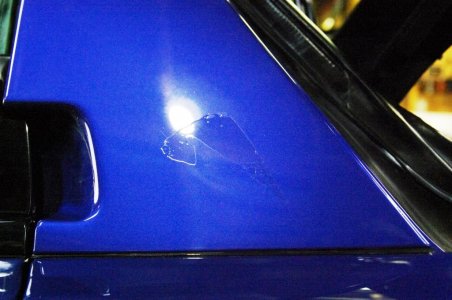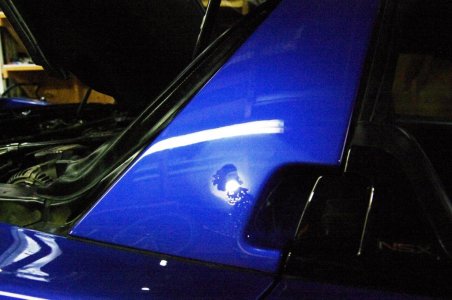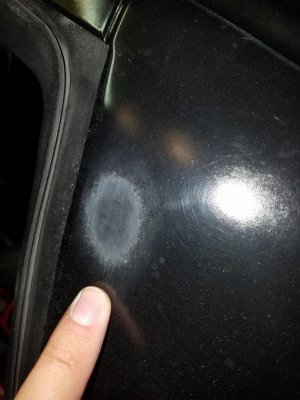A number of years back somebody had provided a link to a company that was selling a version of 'crash wrap' for the explicit purpose of protecting the paint on the car from scuffs when you are doing maintenance. At the time, I checked it out and actually started to place an order until I came to the 'calculate shipping' step. The sole shipping option was UPS Express Plus - $$$. The crash wrap is essentially a big role of paint protection film and kind of heavy. The UPS shipping cost from the US to Canada was about 200% of the actual cost of the wrap after brokerage fees were added in so I kind of nixed that purchase.
I recently discovered that my local autobody supplies vendor sells PPG crash wrap. The product is called PPG VRW100 and is a 3 mil vinyl with a mild adhesive. Oreilly in the US lists it:
 www.oreillyauto.com
www.oreillyauto.com
It is a thin version of paint protection film. The adhesive on the back allows for easy application and it passed a 24 hr easy to pull off test. Can't advise what it would be like if you left it out in the sun for a couple of weeks. It was about $150 Cdn for a 100 ft x 3 ft roll which will do me for the rest of my life and leave enough to pass on to my son for his future projects. There are US vendors that list it for $85 - $135; but, I don't know what the associated shipping costs are. The film is heavy enough and stays in place such that it will prevent paint scuffs on the rear fenders when working on the engine. It will probably prevent paint scratches / chips if a wrench or some light part slipped out of your hand and dropped on the body. If you dropped something heavier it will definitely not prevent a dent. You need the NSX service mat (which is unobtainable unless you find one on the 2nd hand market) for that. I find the aftermarket service mats do not stay in place and will scuff the paint unless you put down the cling wrap first. I put down the wrap and then tape a couple of old bath towels in place for some ding protection.
Anyway, if you are looking for some scuff protection during maintenance you may be able to source the PPG film locally for a reasonable price.
I recently discovered that my local autobody supplies vendor sells PPG crash wrap. The product is called PPG VRW100 and is a 3 mil vinyl with a mild adhesive. Oreilly in the US lists it:
PPG Refinish Repair Wrap VRW100/BX | O'Reilly Auto Parts
Find the right PPG Refinish Repair Wrap for your vehicle at O'Reilly Auto Parts. Place your order online and pick it up at your local store for free.
It is a thin version of paint protection film. The adhesive on the back allows for easy application and it passed a 24 hr easy to pull off test. Can't advise what it would be like if you left it out in the sun for a couple of weeks. It was about $150 Cdn for a 100 ft x 3 ft roll which will do me for the rest of my life and leave enough to pass on to my son for his future projects. There are US vendors that list it for $85 - $135; but, I don't know what the associated shipping costs are. The film is heavy enough and stays in place such that it will prevent paint scuffs on the rear fenders when working on the engine. It will probably prevent paint scratches / chips if a wrench or some light part slipped out of your hand and dropped on the body. If you dropped something heavier it will definitely not prevent a dent. You need the NSX service mat (which is unobtainable unless you find one on the 2nd hand market) for that. I find the aftermarket service mats do not stay in place and will scuff the paint unless you put down the cling wrap first. I put down the wrap and then tape a couple of old bath towels in place for some ding protection.
Anyway, if you are looking for some scuff protection during maintenance you may be able to source the PPG film locally for a reasonable price.











